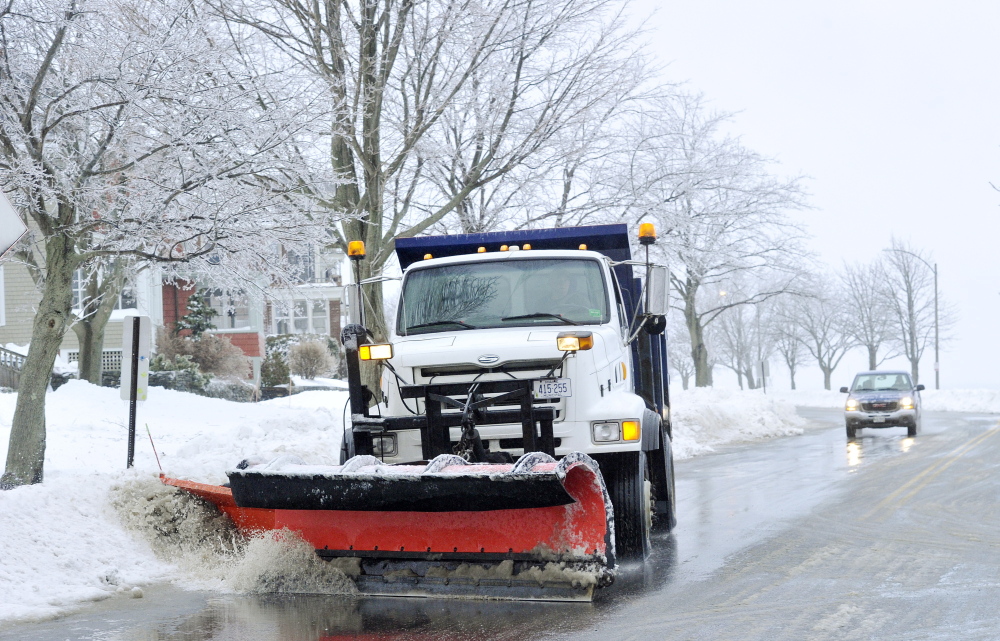NORWICH, Conn. — When winter weather heads toward Connecticut, Nick Szankovics starts to prepare days in advance.
“The initial weather models with a 72-hour time frame are the ones I start to really look at,” said Szankovics, 32, of Norwich. “As you get within three or four days of a possible storm, things start to come together.”
An amateur meteorologist, Szankovics runs the website www.weather-talk.net and compiles weather observations from his network of hundreds of spotters, which stretches from Portland, Maine, to Atlanta, Ga.
In the days leading up to a storm, such as the one that flogged the shoreline with cold rain and snow on Feb. 13, Szankovics releases his projected snowfall maps and alerts his spotters to be at the ready.
“The dynamics of a storm are not set in stone, so preparation and coordination are key,” he said.
And when the forecast calls for snow, mustering people who know the proper way to measure snowfall is important. Amateur weathermen like Szankovics — and the professionals — have no other way to get reliable snowfall data.
“Snow is one of the meteorological factors you really need human beings to measure. There is no technology out there to measure it,” said Bill Jacquemin, a meteorologist at the Connecticut Weather Center in Danbury. “Technology has replaced human beings in plenty of other roles, but we still use humans to measure snowfall.”
So, to make sure they get the most accurate measurements, the Connecticut Weather Center trains volunteers — whom they call snow scouts — in the proper techniques for measuring the white stuff, like using a ruler or yardstick that measures in tenths of an inch, avoiding snowdrifts and measuring at least 10 feet away from a building.
“What we teach are standard snow-measuring techniques, and we teach the correct, accepted way to do it,” Jacquemin said.
The only things necessary to become a snow scout or weather spotter are a ruler that measures in tenths of an inch and a healthy fascination with the weather.
“We have students, retirees and everyone in between,” Jacquemin said. “Sometimes it’s people who aren’t going to go to college and become a meteorologist, but are interested in learning more about weather.”
But sometimes it’s people who want to go to college and become a meteorologist, too.
“It’s something anyone who admires the weather can do,” Nicholas DiGiovanni, 17, of North Haven said.
DiGiovanni is a trained weather spotter who sends his reports to the National Weather Service through its SKYWARN program. Meteorology combines his interests in numbers, maps and math, and he plans to become a professional meteorologist after college.
“Weather is an unwritten story that no one knows past five to 10 days into the future,” he said. “That not knowing is what makes it exciting. I don’t need coffee to stay awake in snowstorms; the adrenaline just kicks in.”
Like DiGiovanni, Greg Horan, 34, of Hamden measures snowfall hourly during storms and sends the information to the National Weather Service. Horan also writes articles on weather for www.wxedge.com.
“I’ve always liked the weather since I was a kid and I’ve always wanted to know what the weather is at my house,” he said. “The idea of being able to tell other people what the weather is like is a fun thing to do as a hobby, and I enjoy it.”
Once the snow starts to pile up, the snow scouts and other observers start measuring it and reporting to the weather center or another organization. Jacquemin said that as the snow total rises, so does the number of reports from snow scouts. “There’s always more interest when the weather goes kind of crazy,” he said.
For Szankovics, getting accurate reports from observers means that he’ll have better data to use for future forecasts and can help people be more prepared for other storms.
“It’s important to think of the safety and well-being of everyone who reads my forecasts long before I get excited about the dynamics of the storm,” Szankovics said. “I’ll make sure everybody is safe and then get excited about how much snow is on the ground.”
Send questions/comments to the editors.



Comments are no longer available on this story